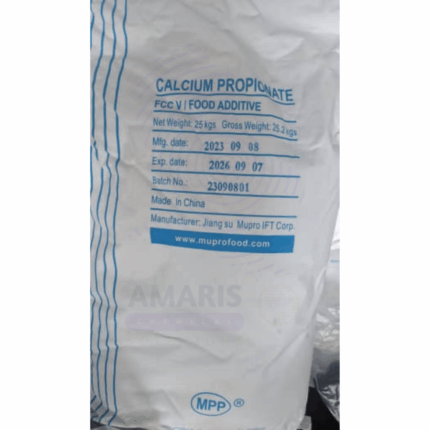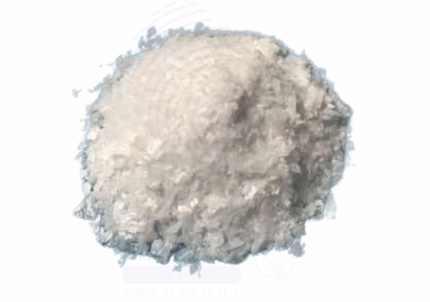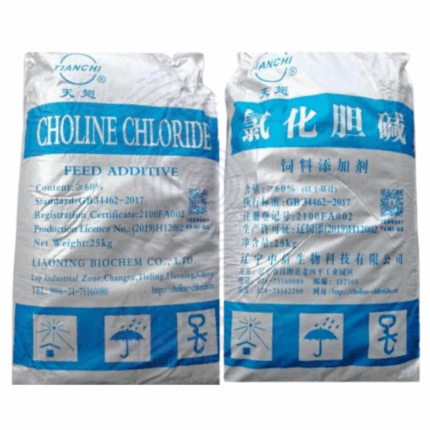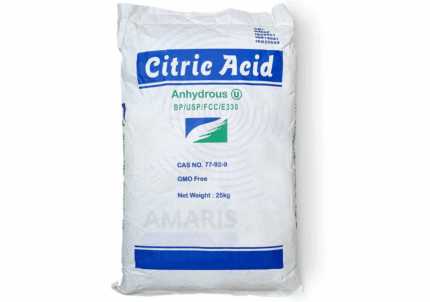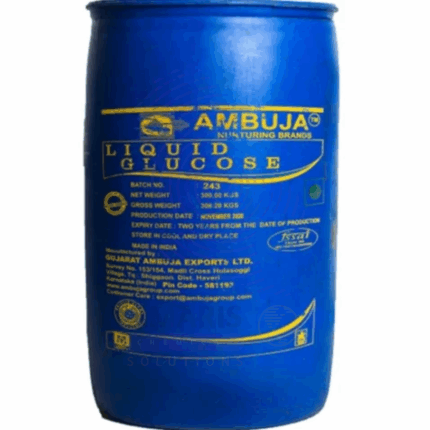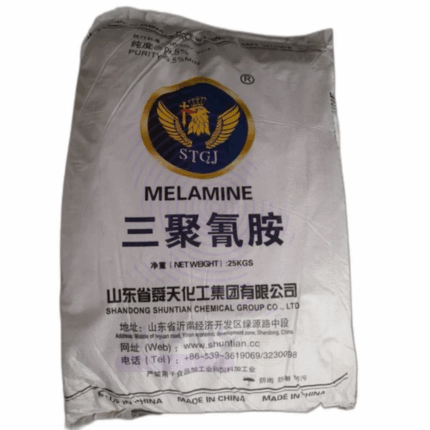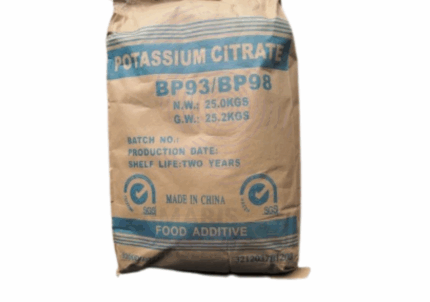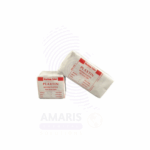
Plasticine Extra Pure
$ 17.00 Original price was: $ 17.00.$ 16.89Current price is: $ 16.89.

Poly Aluminium Chloride Extra Pure
$ 17.89 Original price was: $ 17.89.$ 17.78Current price is: $ 17.78.
Sodium Saccharin
$ 10.90 Original price was: $ 10.90.$ 10.84Current price is: $ 10.84.
Whatsapp Order
Sodium Saccharin is a white crystalline powder or granule with the chemical formula C₇H₄NNaO₃S·2H₂O. It is the sodium salt of saccharin, an artificial sweetener approximately 300–500 times sweeter than sucrose. This non-nutritive, zero-calorie sweetener is widely used in food, beverage, pharmaceutical, and personal care industries. Packaged in 25kg containers, it is highly soluble in water, heat-stable, and has excellent shelf life, making it a cost-effective and versatile sweetening agent.
Description
Table of Contents
Toggle
Sodium Saccharin
Primary Uses
- Food & Beverage Industry
- Tabletop Sweeteners: Used in sachets, tablets, and liquid sugar substitutes.
- Beverages: Common in diet sodas, flavored waters, and powdered drink mixes.
- Baked Goods: Provides sweetness without affecting caloric content.
- Canned Fruits & Syrups: Adds sweetness in sugar-free or low-calorie variants.
- Dairy Products: Used in low-calorie yogurts, flavored milks, and desserts.
- Chewing Gum & Confectionery: Enhances sweetness and prolongs flavor release.
- Processed Foods: Found in salad dressings, sauces, and pickled products.
- Jams, Jellies & Marmalades: Used in sugar-free and diabetic-friendly versions.
- Pharmaceutical Industry
- Syrups & Oral Suspensions: Masks bitter taste of active pharmaceutical ingredients.
- Chewable Tablets & Lozenges: Enhances palatability for pediatric and geriatric patients.
- Nutraceuticals & Supplements: Used in protein powders, effervescent tablets, and gummies.
- Toothpastes & Mouthwashes: Improves taste while maintaining stability in formulations.
- Cough Drops & Throat Lozenges: Provides sweetness without promoting tooth decay.
- Personal Care & Oral Hygiene
- Toothpaste: Adds sweetness without fermentable sugars; widely accepted in fluoride formulas.
- Mouthwash & Oral Rinses: Provides long-lasting sweet taste without affecting pH.
- Lip Balms & Glosses: Used to enhance flavor profile.
- Medicated Creams & Ointments: Occasionally used to improve user acceptability in topical products.
- Tobacco Industry
- Flavor Enhancer in Smokeless Tobacco: Improves taste and palatability of chewing tobacco.
- Cigarette Filters & Papers: Sometimes used in flavor-treated components.
- Animal Feed & Pet Products
- Pet Foods & Treats: Occasionally used to mask bitterness in medicated feeds.
- Livestock Supplements: Improves palatability of mineral and vitamin premixes.
Secondary Uses
- Electroplating Industry
- Brightener in Nickel Electroplating Baths: Enhances deposit brightness and leveling properties.
- Cosmetics & Fragrance
- Lip Products & Flavored Cosmetics: Adds a sweet taste to flavored glosses and balms.
- Industrial Applications
- Chemical Intermediate: Used in synthesis of other sweetener-related compounds.
- Analytical Reagent: Occasionally used in lab tests requiring trace detection or sweetening markers.
- Laboratory & Research
- Taste Research: Used in sensory studies related to sweet taste perception.
- Pharmacokinetics Studies: Employed as a safe, traceable marker compound.
KEY PRODUCT FEATURES
1. Basic Identification Attributes
- Chemical Name (IUPAC): Sodium 1,2-benzisothiazol-3(2H)-one-1,1-dioxide
- Common/Trade Name: Sodium Saccharin
- CAS Number: 6155-57-3
- HS Code: 2925.11.00
- Synonyms: Saccharin sodium salt dihydrate, Benzoic sulfimide sodium salt
2. Physical & Chemical Properties
- Physical State: Crystalline powder or granules
- Color & Odor: White; odorless or slightly sweet odor
- Solubility: Freely soluble in water (1g dissolves in ~1.5 mL water at 20°C)
- Sweetness Intensity: 300–500 times sweeter than sucrose
- Melting Point: Decomposes above 228°C
- pH (1% solution): 6.5–7.5
- Molecular Weight: 241.19 g/mol (dihydrate)
3. Safety & Hazard Attributes
- GHS Classification: Not classified as hazardous under GHS
- Toxicity: LD₅₀ (oral, rat) > 17,000 mg/kg
- Exposure Limits: No established occupational limits; minimize dust generation
- Allergen Status: Non-allergenic; generally well tolerated
4. Storage & Handling Attributes
- Storage Conditions: Store in a cool, dry place; protect from moisture and light
- Container Type: 25kg fiber drums or HDPE-lined bags
- Shelf Life: 36 months in sealed packaging
- Handling Precautions: Avoid inhalation of dust; handle using standard hygiene practices
5. Regulatory & Compliance Attributes
- REACH Registered
- FDA Approved (21 CFR 180.37) – Permitted in specific food categories
- JECFA & Codex Alimentarius – Approved internationally as sweetener
- E Number: E954
- Complies with: USP/NF, FCC, EP, BP standards (depending on grade)
- GRAS Status: Generally Recognized as Safe (when used as directed)
6. Environmental & Health Impact
- Biodegradability: Slowly biodegradable
- Ecotoxicity: Low environmental impact at normal use concentrations
- Bioaccumulation: Not bioaccumulative
- Aquatic Impact: Minimal toxicity in aquatic organisms at standard concentrations
SAFETY HANDLING PRECAUTIONS
Safety Handling Precautions
- PPE Required: Gloves, goggles, dust mask (in bulk handling)
- Handling Guidelines: Use local ventilation in dust-prone areas
- Storage Measures: Keep container tightly closed; segregate from acids and oxidizers
First Aid Measures
- Inhalation: Remove to fresh air; seek medical attention if symptoms persist
- Skin Contact: Wash with soap and water
- Eye Contact: Rinse thoroughly with clean water for several minutes
- Ingestion: Rinse mouth; seek medical advice if large quantity ingested
Firefighting Measures
- Fire Hazards: Non-flammable; may decompose at high temperatures
- Extinguishing Media: Use water spray, dry chemical, or CO₂
- Hazardous Combustion Products: Oxides of sulfur, carbon, and nitrogen
Related products
Calcium Propionate
Calcium Propionate is the calcium salt of propionic acid, appearing as a white, crystalline powder or granules with a slightly salty taste and low odor. It is highly soluble in water and used primarily as a food preservative and mold inhibitor. Calcium Propionate inhibits the growth of mold, bacteria, and fungi, making it especially valuable in baked goods, dairy products, and animal feed to extend shelf life and prevent spoilage. It also finds application in pharmaceuticals and cosmetics as a preservative and antimicrobial agent.
Calcium Saccharin
Calcium Saccharin is the calcium salt form of saccharin, a synthetic sweetener. It appears as a white to off-white crystalline powder with a sweet taste that is several hundred times sweeter than sucrose (table sugar). Calcium Saccharin is water-soluble and widely used as a non-nutritive sweetener in food and beverage products, pharmaceuticals, and oral care formulations. Due to its stability under heat and acidic conditions, it is ideal for baked goods and beverages. It serves as a sugar substitute for diabetic and calorie-restricted diets and is often used in combination with other sweeteners to improve taste profiles.
Choline Chloride Powder
Choline Chloride Powder is a white to off-white crystalline powder containing 60% choline chloride, a quaternary ammonium salt essential as a nutrient in animal and poultry feed. It serves as a vital source of choline, an important component in fat metabolism, liver function, and cell membrane integrity. Produced through chemical synthesis, this powder form is highly soluble in water, making it easy to incorporate into feed premixes and supplements. Choline chloride is widely used in the agriculture industry to prevent choline deficiency, enhance growth performance, and improve overall health in livestock. Beyond animal nutrition, it finds applications in chemical manufacturing and pharmaceuticals.
Citric Acid Anhydrous
Citric Acid Anhydrous is a white, crystalline organic acid widely used across food, pharmaceutical, cosmetic, and industrial sectors. It is the anhydrous form of citric acid, meaning it contains no water molecules in its crystal lattice, resulting in higher purity and more concentrated acidic properties compared to its monohydrate form. Derived from natural sources like citrus fruits or produced via microbial fermentation, citric acid anhydrous is valued for its sour taste, excellent chelating ability, and buffering capacity. It serves as a natural preservative, pH adjuster, antioxidant synergist, and cleaning agent, making it a versatile ingredient in many formulations.
Liquid Glucose
$ 1.15
Liquid Glucose is a viscous, clear to pale amber syrup primarily composed of glucose and other saccharides. It is produced by the enzymatic hydrolysis of starch derived from corn, wheat, or potatoes. Known for its high sweetness and excellent moisture-retention properties, Liquid Glucose is widely used in the food and beverage industry to enhance texture, sweetness, and shelf life. It also acts as a humectant and crystallization inhibitor, improving the quality and consistency of various processed foods.
Melamine
Melamine is an organic compound widely used as a raw material in the production of melamine-formaldehyde resins, laminates, adhesives, coatings, and flame retardants. It offers excellent hardness, thermal stability, and chemical resistance. Supplied in 25kg bags, melamine is a white crystalline powder with high nitrogen content, making it a valuable additive in plastics, construction materials, and surface treatments.
Potassium Citrate
Potassium Citrate is a potassium salt of citric acid, appearing as a white, crystalline, water-soluble powder. It is widely used in food, pharmaceutical, agricultural, and industrial applications due to its buffering, alkalizing, and sequestrant properties. Potassium Citrate helps regulate acidity and provides potassium ions critical for various biochemical and physiological functions.
Xylitol
Xylitol is a naturally occurring sugar alcohol used as a low-calorie sweetener. It is derived primarily from plant materials such as birch wood and corn cobs. Xylitol has sweetness comparable to sucrose but with fewer calories, making it popular in sugar-free and diabetic-friendly food products. It also exhibits dental health benefits by reducing the risk of cavities.


 Preservatives(food)
Preservatives(food) Flavor Enhancers
Flavor Enhancers Acidulants
Acidulants Sweeteners
Sweeteners Antioxidants
Antioxidants Colorants(food)
Colorants(food) Nutraceutical Ingredients (food)
Nutraceutical Ingredients (food) Nutrient Supplements
Nutrient Supplements Emulsifiers
Emulsifiers
 Collectors
Collectors Dust Suppressants
Dust Suppressants Explosives and Blasting Agents
Explosives and Blasting Agents Flocculants and Coagulants
Flocculants and Coagulants Frothers
Frothers Leaching Agents
Leaching Agents pH Modifiers
pH Modifiers Precious Metal Extraction Agents
Precious Metal Extraction Agents
 Antioxidants(plastic)
Antioxidants(plastic) Colorants (Pigments, Dyes)
Colorants (Pigments, Dyes) Fillers and Reinforcements
Fillers and Reinforcements Flame Retardants
Flame Retardants Monomers
Monomers Plasticizers
Plasticizers Polymerization Initiators
Polymerization Initiators Stabilizers (UV, Heat)
Stabilizers (UV, Heat)
 Antifoaming Agents
Antifoaming Agents Chelating Agents
Chelating Agents Coagulants and Flocculants
Coagulants and Flocculants Corrosion Inhibitors
Corrosion Inhibitors Disinfectants and Biocides
Disinfectants and Biocides Oxidizing Agents
Oxidizing Agents pH Adjusters
pH Adjusters Scale Inhibitors( water)
Scale Inhibitors( water)
 Antioxidants(cosmetic)
Antioxidants(cosmetic) Emollients
Emollients Fragrances and Essential Oils
Fragrances and Essential Oils Humectants
Humectants Preservatives
Preservatives Surfactants(cosmetic)
Surfactants(cosmetic) Thickeners
Thickeners UV Filters
UV Filters
 Fertilizers
Fertilizers Soil Conditioners
Soil Conditioners Plant Growth Regulators
Plant Growth Regulators Animal Feed Additives
Animal Feed Additives Biostimulants
Biostimulants Pesticides (Herbicides, Insecticides, Fungicides)
Pesticides (Herbicides, Insecticides, Fungicides)
 Active Pharmaceutical Ingredients (APIs)
Active Pharmaceutical Ingredients (APIs) Excipients
Excipients Solvents(pharmaceutical)
Solvents(pharmaceutical) Antibiotics
Antibiotics Antiseptics and Disinfectants
Antiseptics and Disinfectants Vaccine Adjuvants
Vaccine Adjuvants Nutraceutical Ingredients (pharmaceutical)
Nutraceutical Ingredients (pharmaceutical) Analgesics & Antipyretics
Analgesics & Antipyretics
 Analytical Reagents
Analytical Reagents Solvents(lab)
Solvents(lab) Chromatography Chemicals
Chromatography Chemicals Spectroscopy Reagents
Spectroscopy Reagents microbiology-and-cell-culture-reagents
microbiology-and-cell-culture-reagents Molecular Biology Reagents
Molecular Biology Reagents Biochemical Reagents
Biochemical Reagents Inorganic and Organic Standards
Inorganic and Organic Standards Laboratory Safety Chemicals
Laboratory Safety Chemicals Specialty Laboratory Chemicals(Special Laboratory Equipment)
Specialty Laboratory Chemicals(Special Laboratory Equipment)
 Demulsifiers
Demulsifiers Hydraulic Fracturing Fluids
Hydraulic Fracturing Fluids Scale Inhibitors(oil)
Scale Inhibitors(oil) Surfactants(oil)
Surfactants(oil) Drilling Fluids
Drilling Fluids
 Dyes and Pigments
Dyes and Pigments Bleaching Agents
Bleaching Agents Softening Agents
Softening Agents Finishing Agents
Finishing Agents Antistatic Agents
Antistatic Agents
 Admixtures
Admixtures Waterproofing Agents
Waterproofing Agents Sealants and Adhesives
Sealants and Adhesives Curing Compounds
Curing Compounds Concrete Repair Chemicals
Concrete Repair Chemicals Anti-Corrosion Coatings
Anti-Corrosion Coatings
 Surfactants(cleaning)
Surfactants(cleaning) Builders
Builders Enzymes
Enzymes Solvents (Cleaning)
Solvents (Cleaning) Fragrances
Fragrances
 Electronic Chemicals
Electronic Chemicals Catalysts
Catalysts Lubricants
Lubricants Photographic Chemicals
Photographic Chemicals Refrigerants
Refrigerants Automotive chemicals
Automotive chemicals Pyrotechnic Chemicals
Pyrotechnic Chemicals
 Biodegradable Surfactants
Biodegradable Surfactants Bio-based Solvents
Bio-based Solvents Renewable Polymers
Renewable Polymers Carbon Capture Chemicals
Carbon Capture Chemicals Wastewater Treatment Chemicals
Wastewater Treatment Chemicals
 Pigments
Pigments Solvents(paint)
Solvents(paint) Specialty Coatings
Specialty Coatings Binders/Resins
Binders/Resins Additives
Additives Driers
Driers Anti-Corrosion Agents
Anti-Corrosion Agents Functional Coatings
Functional Coatings Application-Specific Coatings
Application-Specific Coatings
 Fresh Herbs
Fresh Herbs Ground Spices
Ground Spices Whole Spices
Whole Spices Spice Blends
Spice Blends Dried Herbs
Dried Herbs
 Leavening Agents
Leavening Agents Dough Conditioners
Dough Conditioners Flour Treatments
Flour Treatments Fat Replacers
Fat Replacers Decoratives
Decoratives Preservatives(baking)
Preservatives(baking)
 Plasticizers & Softeners
Plasticizers & Softeners Reinforcing Agents
Reinforcing Agents Adhesion Promoters
Adhesion Promoters Vulcanizing Agents
Vulcanizing Agents Antidegradants
Antidegradants Blowing Agents
Blowing Agents Fillers & Extenders
Fillers & Extenders Accelerators & Retarders
Accelerators & Retarders

